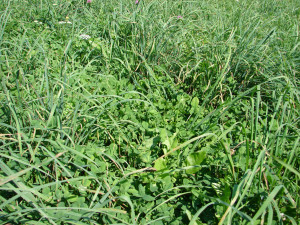Surprising to many is the fact that you can eat grass. Despite there being hundreds of varieties of bladed grass found in the Americas, almost all (99% of them) can be eaten. This ranges from wheat, oats, and bamboo to the wild meadow varieties. The downside is that the large proportion of common and wild grasses are indigestible cellulose for humans.
The young shoots up to 6 inches tall can be eaten raw and the starchy base (usually white and at the bottom when you pluck it) can be eaten as a trail nibble. The more mature the grass plant gets, the more fibrous the plant becomes. For older plants the base can be chewed and spit out — extracting the beneficial juices in the process. Or a tea can be made from the fresh or dried leaves.
Grass was boiled and used as a staple in the gulags and Chinese prisons as well as other internment camps over the centuries despite being largely indigestible fiber. But gulags and prisons are often less concernend with nutrition than starvation. As with wheat, best used when the hull removed and flour made, all grasses share the same basic properties; however the poor yield of flour is why our lawns are not used as farm produce.
The best part of the grass plant to eat are the seed heads, which can be gathered to make millet for breads or filler for soups & stews. Of the 99% that can be eaten raw, about 1% have toxic seeds and require that you roast or cook the seeds first. As a word of caution, stay away from blackish or purple colored grass seeds. This is a good indication of toxic fungus. Just make sure they are green or brown. Also use common sense when gathering. Don’t gather where there has been recent sprayings of weed killer.
Information on toxic grass can be found in the PDF attachment.
The majority of this information came from: http://tacticalintelligence.net/blog/the-fantastic-four-4-essential-wild-edible-plants-that-may-one-day-just-save-your-life.htm
Jon
annual-ryegrass-toxicity-and-blown-grass-beard-grass-poisoning


Leave a Reply